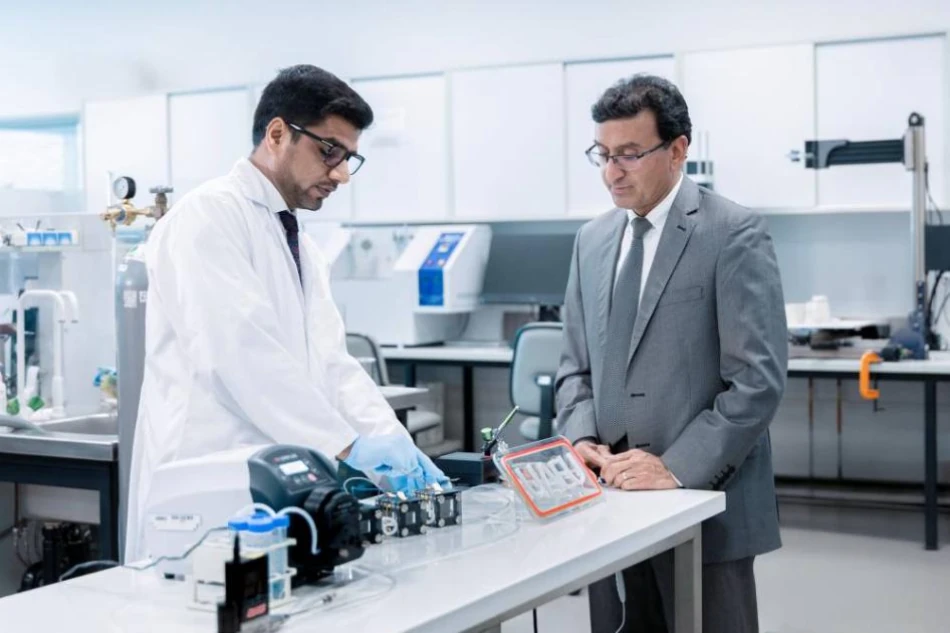
UAE University Awarded US Patent for Pioneering Battery Innovation
UAE University Patents Revolutionary CO2-to-Energy Battery Technology
The United Arab Emirates University has secured a groundbreaking U.S. patent for a "Metal-Carbon Dioxide (CO2) Battery Cell" that transforms carbon dioxide emissions into electrical energy and valuable chemical products. This innovation represents a significant leap in green battery technology, offering a dual solution to climate change by both reducing atmospheric CO2 and generating clean energy through an advanced zero-flow cell design.
Breaking the Traditional Battery Paradigm
Unlike conventional lithium-ion or lead-acid batteries that rely on finite materials and often create disposal challenges, this metal-carbon dioxide battery cell fundamentally reimagines energy storage. The technology converts CO2 gas into electrical power while simultaneously producing valuable chemical byproducts including formate and hydrocarbons.
The zero-flow design eliminates the need for complex pumping systems typically required in flow batteries, potentially reducing manufacturing costs and maintenance requirements. This approach could make large-scale deployment more economically viable compared to existing carbon capture and utilization technologies.
Strategic Positioning in the Global Clean Energy Race
UAE's Innovation Ambitions
This patent aligns with the UAE's broader strategy to position itself as a clean energy hub beyond its oil-dependent economy. The country has committed to achieving net-zero emissions by 2050 and has invested heavily in renewable energy projects, including the world's largest single-site solar park in Dubai.
Dr. Ali Al Marzouqi, Dean of the College of Graduate Studies at UAE University, emphasized that the invention opens new horizons for utilizing carbon dioxide in energy production, reinforcing the university's leadership role in clean energy technology.
Competitive Landscape
The UAE's breakthrough comes as countries worldwide race to develop carbon utilization technologies. China has invested billions in carbon capture projects, while the United States has allocated significant funding through the Infrastructure Investment and Jobs Act for similar initiatives. European nations, particularly Germany and the Netherlands, have also prioritized CO2 conversion technologies as part of their Green Deal objectives.
Market Implications and Commercial Potential
The dual-output nature of this technology—producing both energy and valuable chemicals—could create multiple revenue streams for commercial applications. Industrial facilities generating significant CO2 emissions, such as cement plants, steel mills, and power stations, represent immediate target markets.
Dr. Mohammed Aslam, one of the lead inventors, described the innovation as a qualitative leap in battery technology, noting its potential to accelerate the transition toward a green economy based on innovation. The technology's ability to achieve higher energy density and current output compared to traditional batteries could make it particularly attractive for grid-scale energy storage applications.
Technical Advantages and Scaling Challenges
The battery's high-efficiency energy conversion capability addresses two critical environmental challenges simultaneously: reducing atmospheric CO2 concentrations and providing clean energy storage. However, the path to commercialization will likely require significant capital investment and extensive testing under various operational conditions.
The success of this technology will depend on factors including production costs, energy conversion efficiency rates, and the market value of chemical byproducts. If the economics prove favorable, this innovation could accelerate adoption of carbon capture and utilization technologies across industries struggling to meet emissions reduction targets.
The UAE's patent represents more than just a technological achievement—it signals the country's determination to lead in next-generation clean energy solutions while creating new economic opportunities from environmental challenges.
 Omar Rahman
Omar Rahman







